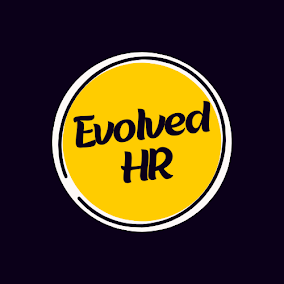1.1 What is Talent Acquisition?
Talent acquisition is a strategic approach to identifying,
attracting, and hiring top talent to meet an organization’s needs. Unlike
traditional recruitment, which often focuses on filling immediate vacancies,
talent acquisition is a continuous process aimed at building a pipeline of
qualified candidates for future roles. This proactive strategy ensures that
organizations are well-prepared to meet their long-term goals and adapt to
changing market conditions.
Advance your career: as an HR Business Partner: Click here!
1.2 Importance of Talent Acquisition
In today's competitive job market, effective talent
acquisition is essential for organizations to thrive. By understanding the key
components, challenges, and best practices, companies can attract and retain
top talent, driving their success.
In today’s competitive business environment, having the
right talent is crucial for organizational success. Effective talent
acquisition helps companies:
- Build
high-performing teams: By sourcing and hiring individuals who are not
only skilled but also a good cultural fit, organizations can enhance team
performance and productivity. A
high-performing team is a group of individuals who work together
effectively to achieve exceptional results. They possess a strong sense of
purpose, shared values, and a commitment to continuous improvement.
- Key
factors in building high-performing teams include:
-
Clear Goals and Objectives: Defining and
communicating clear goals ensures everyone is aligned and working towards a
common purpose.
-
Effective Communication: Open, honest,
and transparent communication fosters trust, collaboration, and understanding
among team members.
-
Strong Leadership: A strong leader
provides guidance, support, and motivation, creating a positive and productive
work environment.
-
Empowerment and Trust: Empowering team
members and building trust allows them to take ownership of their work and make
decisions.
-
Diversity and Inclusion: A diverse team
brings different perspectives and skills, leading to more innovative and
creative solutions.
-
Recognition and Rewards: Recognizing and
rewarding team members for their contributions boosts morale and encourages
continued high performance.
-
Continuous Learning and Development:
Investing in the professional growth of team members helps them stay updated
with industry trends and improve their skills.
-
By focusing on these key elements, organizations
can create high-performing teams that drive innovation, productivity, and
success.
-
Reduce turnover rates: A strategic
approach to hiring ensures that employees are well-matched to their roles,
leading to higher job satisfaction and lower turnover.
-
Support growth and innovation: With the
right talent in place, companies can drive innovation and achieve their growth
objectives.
1.3 Talent Acquisition vs. Recruitment
Talent acquisition and recruitment are often used
interchangeably, but there is a subtle difference between the two.
Recruitment is a more transactional process focused on
filling immediate job vacancies. It involves activities like posting job ads,
screening resumes, and conducting interviews.
Talent acquisition is a strategic approach that goes beyond
filling immediate vacancies. It focuses on building a pipeline of potential
candidates, developing a strong employer brand, and ensuring the organization
has the right talent to achieve its long-term goals.
In summary:
- Recruitment
is about filling specific roles.
- Talent
acquisition is about building a sustainable talent pool and ensuring the
organization has the right people in place to succeed.
While recruitment is a component of talent acquisition,
talent acquisition encompasses a broader range of activities aimed at
attracting and retaining top talent.
It can be summarised as following:
While the terms “talent acquisition” and “recruitment” are
often used interchangeably, they represent different approaches:
- Recruitment:
Typically focuses on filling current job openings. It is often a reactive
process triggered by immediate hiring needs.
- Talent
Acquisition: A more comprehensive and strategic approach that involves
long-term planning and building relationships with potential candidates. It
encompasses employer branding, candidate experience, and workforce
planning.
1.4 The Talent Acquisition Process
The talent acquisition process involves several key steps:
- Workforce
Planning: Identifying the skills and roles needed to achieve
organizational goals.
- Sourcing:
Attracting potential candidates through various channels such as job
boards, social media, and networking events.
- Screening
and Selection: Assessing candidates’ qualifications and fit for the
organization through interviews, assessments, and background checks.
- Onboarding:
Integrating new hires into the organization and providing them with the
tools and resources needed to succeed.
1.5 Best Practices in Talent Acquisition
To excel in talent acquisition, organizations should
consider the following best practices:
- Develop
a strong employer brand: A positive employer brand attracts top talent
and sets the organization apart from competitors.
- Leverage
technology: Utilize applicant tracking systems (ATS), artificial
intelligence (AI), and data analytics to streamline the hiring process and
make informed decisions.
- Focus
on candidate experience: Ensure a smooth and engaging recruitment
process to leave a positive impression on candidates.
- Foster
diversity and inclusion: Create a diverse and inclusive workplace to
attract a wide range of talent and drive innovation.






.jpg)

.png)
No comments:
Post a Comment